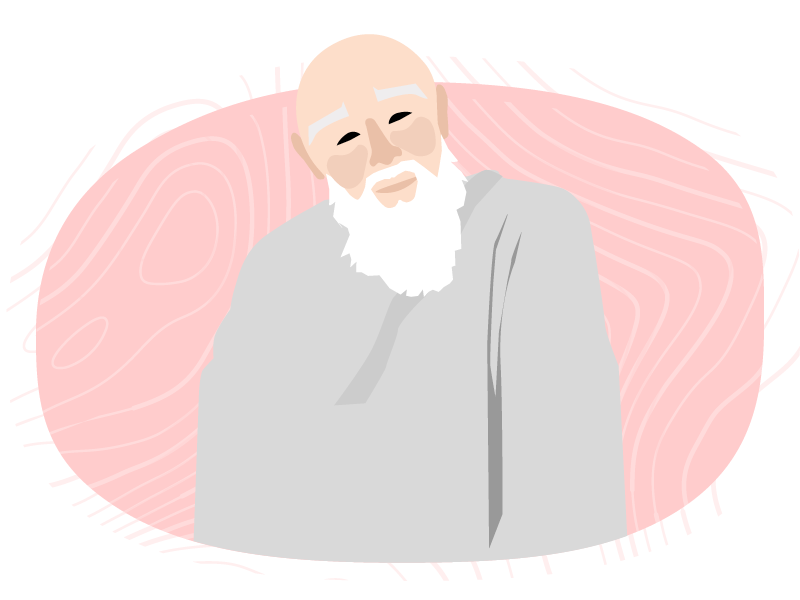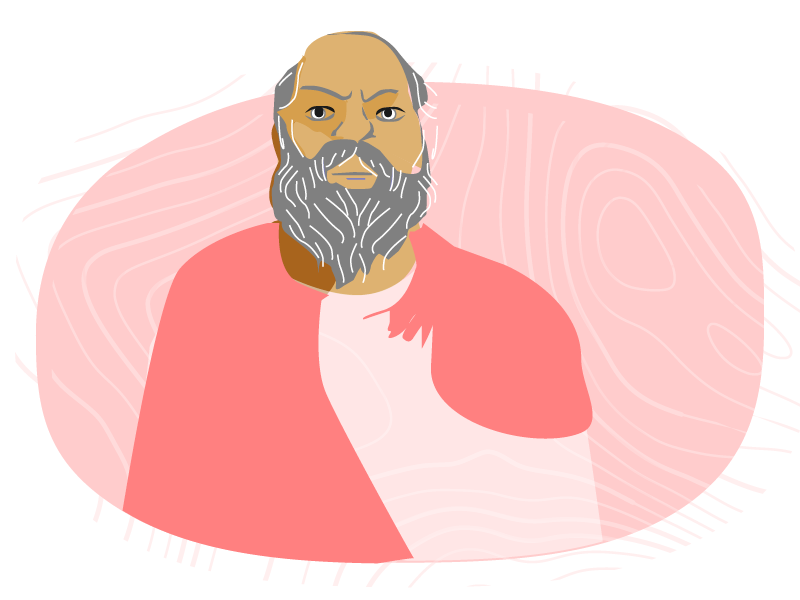Approaches
Focusing Therapy
Focusing is a gentle way of self-exploration and therapeutic change. Focusing grew out of evidence-based research which has continued for more than 40 years. Focusing arises out of a natural human process and brings direct access to bodily knowing. It can result in a deep, bodily-felt experience of change.
Read On
Most people are able to learn and practice sensing their own body-mind wisdom (Focusing) and come to a resolution of their life challenges. This helps bring clarity to life situations and an ability to move forward in life.
In Focusing-Oriented Therapy, the counsellor is committed to a therapeutic relationship through which you, the client can address issues in your life. Research suggests that speaking freshly from direct felt experience rather than from memory or intellectualization of experience is of key importance to a client’s ability to attain the changes they seek. As such, a common feature of Focusing-Oriented Therapy is the goal of creating a supportive environment that allows and supports your ability to address experientially the issue you are struggling with.
What you can expect from Focusing-Oriented Therapy:
- You will be treated with respect as a whole person, capable and knowledgeable about what rings true for you in your own life. Your therapist will encourage you to check their suggestions with your own implicit sense of what feels right for you.
- You will not be told how you should behave or who you should be. Instead, your therapist will work with you to help you find the small increments of change that come with learning to listen to your own bodily-felt sense of your situation. It is this process of gentle attending that allows something new to form that can lead the way to resolve your issue or problem.
- You can expect your therapist to have experience and training in how to be in contact with their own bodily felt sense in the therapeutic context. That expertise in Focusing will help your therapist to creatively find many ways to point you to your own felt sense.
- A Focusing-Oriented Therapist will also use that Focusing expertise to listen to you in such a way that you will experience being exactly understood.
Focusing as a self-help process.
Focusing as a form of gentle self-reflection can also be learned by an individual as a self-help process. Focusing as a self-help process is available in guided Focusing sessions with an experienced Focusing guide or through teaching sessions for those who wish to learn how to engage the Focusing process on their own. Both of these can be offered in person, via Skype or over the telephone.
Focusing training workshops – Workshop training for Focusing is available by certified Focusing Trainers. Workshops are held frequently in Edmonton, Alberta throughout the year. Please inquire when the next Focusing workshop is scheduled.
Additional information is available at www.focusing.org and www.focusingtherapy.org
Hypnotherapy
Hypnosis is a form of focused internal attention. It facilitates intentional access to mental capacities that we may not be presently utilizing in helpful ways. Essentially hypnosis is the conscious use of deeper levels of consciousness to shape positive perceptions of ourselves and the world around us. Thru the experience of hypnosis, we may be able to develop the capacity for self-hypnosis. This skill can be enormously beneficial to our well-being.
Read On
Clinical hypnosis is used in 3 ways:
- To focus the imagination to create powerful positive mental imagery. Our imaginations shape our perceptions and actions. Learning how to positively harness our imaginations is a great advantage.
- To present and consider new and beneficial ways of looking at and acting within situations. A skilled clinician works with the client to carefully select suggestions that are compatible with the client’s goals and worldview.
- To engage in subconscious exploration. This approach can be helpful to learn about the hidden motivations, perceptions and experiences that may be unduly negatively influencing the client’s choices and behaviours. This approach can be helpful in that it bypasses the conscious mind’s attempts to rationalize and make sense of choices that ‘don’t make sense’.
Myths about Hypnosis
It is commonly believed that hypnosis can result in loss of control, of being dominated by the will of the practitioner. This belief typically originates in observations of the work of stage hypnotists who have created a form of ‘entertainment’ involving the exhibition of participants engaging in ‘humorous’ and embarrassing behaviours. The work of stage hypnotists bears no resemblance to the work of clinical hypnosis. In the former instance, participants are pre-selected for their willingness to surrender their self-control and engage in these scenarios. In clinical hypnosis, the intention is to form a partnership where the clinician and client work together to use hypnosis to pursue the stated objectives of the client. It is truly a partnership that is only successful if the client feels safe and confident in the therapeutic relationship.
Another common misconception is that clients will not be able to remember what has transpired during hypnosis. This rarely happens. Remembrance of the hypnotic state is typically encouraged so that the client may make optimal use of the experience in their day-to-day life.
Similarly, some people fear that foreign ideas may be ‘implanted’ during hypnosis. This is not the case because our minds know what our experience is what is true for us and will reject what is untrue and incompatible.
When will Hypnosis be Beneficial?
Hypnosis is most effective when: the client is motivated to change and feels comfortable and safe with their therapist, and when utilized by a competent trained therapist within the context of good quality therapy. Hypnosis is not a standalone treatment but rather one potential aide to good quality psychotherapy.
For more information about our hypnosis services please contact John Walker at 780 482 3711 or [email protected]
More information about clinical hypnosis can be found at http://www.asch.net/
“The root of suffering is attachment.”
~ Buddha

Somatic Experiencing is a holistic approach to healing trauma. Somatic Experiencing was developed by Peter Levine and is based on the idea that trauma leads to dysregulation in the nervous system. Some of the things this therapy can help with are depression, anxiety, PTSD, grief, insomnia, muscle tension, and indigestion.
Read On
During a traumatic event, we experience a sense of threat or danger, and our system mobilizes ‘survival energy’ (also known as fight, flight, or freeze). ‘Survival energy’ puts stress on the body to help us deal with threat when it is present. Such stress (survival energy) is helpful when we are under threat but often is not released when the event is over. If stress (survival energy) is trapped in our bodies, we suffer the mental, emotional, and physical effects of trauma. When we ‘feel triggered’, we experience this stress in our body. Whether we know what event caused us distress or not, Somatic Experiencing supports the release of survival energy stored in the nervous system.
Somatic Experiencing works with body awareness, as well as sensations, images, behaviours, and emotions. At the beginning of Somatic Experiencing Therapy, your therapist may help you learn about your autonomic nervous system. Also, body awareness exercises, such as ‘resourcing’ may be part of therapy. Some of the resources you experience in therapy, you can take into your life, so you feel calmer and more resilient next time you think of or experience troublesome events. Somatic Experiencing helps you release stress stored in your nervous system, and increases your capacity to feel calm and experience a fuller range of emotions.

“You must never be fearful about what you are doing when it is right.”
~ Rosa Parks
The Myers-Briggs Type Indicator (MBTI) is a relatively short, noninvasive, the self-report questionnaire used to measure and describe people’s preferences for how they like to get information, make decisions, and orient their lives. The MBTI provides a useful measure of personality by looking at eight personality preferences that people use at different times.
Read On
These eight preferences are organized into four bi-polar scales:
Extraversion – Energized by people and things in the external world
Introversion – Energized by ideas or impressions in the inner world.
Sensing – Gathers details and facts that can be confirmed by experience.
Intuition – Gathers ideas and sees future possibilities.
Thinking – Makes decisions by logic and analysis.
Feeling – Makes decisions based on personal values.
Judging – Enjoys planning and deciding.
Perceiving – Enjoys remaining open to new options.
Why is the MBTI so popular?
- The MBTI is an indicator, not a test, so there are not right or wrong answers.
- It sorts people into 16 broad personality types. But there are no bad types. Each type has its own strengths and some minor pitfalls.
- The MBTI looks only at normal behaviour. It does not measure or detect psychiatric disturbances, trauma, intelligence or maturity.
- The MBTI gives results that are practical and can be used in everyday life: work, romantic relationships, education, parenting
What are the benefits of knowing your type?
With professional interpretation, you can use the information to better understand yourself, your motivations, your strengths, and potential areas for growth. It will help you to better understand and appreciate those who differ from you and those with whom you are most comfortable. This understanding and appreciation of the differences in the way people prefer to function can greatly enhance the effectiveness of how people relate to one another.
The MBTI applies to
-
- Personal growth
- Romantic relationships
- Career discernment
- Parenting
MBTI Applications to Teams and Organizations
If your organization or team is interested in an MBTI workshop drop us a line and we would be happy to discuss your needs.
More information is available at www.psychometrics.com
EMDR is a complex psycho-therapeutic technique that combines features of experiential, cognitive, psychodynamic, behavioural and relational therapies. It uses a form of bilateral stimulation (eye movements or auditory or kinesthetic stimulation) to work with your natural healing capacity. EMDR is used within a comprehensive treatment program provided by a licensed and trained clinician who is experienced in working with your issue or concern. EMDR is not related to hypnosis.
Read On
There are different theories as to how EMDR works. One theory suggests that it is the creation of a dual focus (memory and bilateral stimulation) that is the healing agent. EMDR appears to assist your brain inappropriately ‘digesting’ and learning from your life experience.
EMDR is one component of integrative therapy. After gathering the necessary background information and establishing a good rapport with you, your therapist will introduce you to EMDR. The actual EMDR experience is a little different for everyone as it is partly determined by your natural healing capacity. Your therapist will work closely with you, using your thoughts, emotions, body sensations and memories to keep the process on track.
To date numerous controlled studies of EMDR have been completed, making it the most intensively researched of any method for the treatment of trauma.
EMDR has been used successfully to enhance personal strengths and to treat:
- Depression
- Excessive anger
- Post-traumatic stress
- Dissociative conditions
- Complicated grief
- Sexual, physical, and emotional abuse
- Addictions
- Anxiety, panic, and phobias
As with any form of therapy, you are in charge of EMDR. Disturbing memories or sensations may be evoked during EMDR and your therapist will work closely with you to help you manage these productively. At any time you are free to stop the process and talk with your therapist about your needs.
John Walker, Susan Anderson and Peggy Chen are trained in the therapeutic use of EMDR.
More information is available at www.emdr.com
Acceptance and Commitment Therapy (ACT) is a form of psychotherapy, as well as a branch of clinical behaviour analysis.[1] It is an empirically-based psychological intervention that uses acceptance and mindfulness strategies[2] along with commitment and behaviour-change strategies to increase psychological flexibility. This approach was originally termed comprehensive distancing.[3]
Read On
Steven C. Hayes developed acceptance and commitment therapy in 1982 in order to create an approach that integrates both covert conditioning and behaviour therapy.[4] There are a variety of protocols for ACT, depending on the target behaviour and setting. For example, in behavioural health areas, a brief version of ACT is called focused acceptance and commitment therapy (FACT).[5]
The objective of ACT is not the elimination of difficult feelings rather, it is to be present with what life brings and to "move toward valued behaviour".[6]: 240 Acceptance and commitment therapy invites people to open up to unpleasant feelings, learn not to overreact to them, and not avoid situations where they are invoked. Its therapeutic effect aims to be a positive spiral where a greater understanding of one's emotions leads to a better understanding of the truth.[7] In ACT, "truth" is measured through the concept of "workability", or what works to take another step toward what matters (e.g. values, meaning).
Narrative therapy [1] is a form of psychotherapy that seeks to help patients identify their values and the skills associated with them. It provides the patient with knowledge of their ability to live these values so they can effectively confront current and future problems. The therapist seeks to help the patient co-author a new narrative about themselves by investigating the history of those values.
Read On
Narrative therapy claims to be a social justice approach to therapeutic conversations, seeking to challenge dominant discourses that it claims shape people's lives in destructive ways. While narrative work is typically located within the field of family therapy, many authors and practitioners report using these ideas and practices in community work, schools and higher education.[2][3] Narrative therapy has come to be associated with collaborative as well as person-centered therapy.[4]
Read On
Through the gentle yet powerful process of Family Constellations, we enter into connection with our ancestors through the energetic ‘Knowing Field.’ Our entanglements within our ancestral family are gently and respectfully uncovered.
Family Constellation participants commonly report their experience to be sacred, cathartic, connecting, and profound. As a compassionate and highly intuitive facilitator and guide, Rita gently guides participants into a sense of right-relation which allows for healing and the natural flow of love.
“I don’t have to chase extraordinary moments to find happiness – it’s right in front of me if I’m paying attention and practicing gratitude.”
~ Brene Brown

Therapy for Post-Traumatic Stress Disorder and Traumatic Dissociation
Traumatic events happen in most people’s lives. These events overwhelm our sense of being safe in the world; they tear away from us our assumption of things being ‘okay’. If we are fortunate we don’t experience too many of these and we are able to spontaneously heal and recover our feeling of safety. Having safe, secure nurturing relationships in our lives goes a long way to making things right again.
Read On
Sometimes we experience traumatic events that are too severe or too frequent for our natural resiliency to handle. Then we begin to experience posttraumatic stress disorder (PTSD). PTSD can injure us emotionally, psychologically, cognitively, spiritually and physically. PTSD can last for a few days or for decades. The symptoms of PTSD include:
- being hyper-vigilant or ‘on-guard’
- feeling emotionally numb
- having flashbacks, unwanted reminders and dreams of the trauma
- becoming pessimistic about the world and the future
- experiencing a loss of religious or spiritual faith
- various physical conditions including excess sweating, flushes and chills, feeling faint, muscular aches and pains and digestive difficulties.
Traumatic dissociation is a form of complex PTSD. When faced with overwhelming trauma one of the creative coping strategies available to the brain is to create a psychological separation from the event. Our brains can do this by disconnecting us from the memory of the events, from the world around us, from our feelings, from our body, from our mind and from our identity. If we do this repeatedly it can become a habit that can cause problems for us later in life when we want to be more connected to ourselves, family and friends and the world around us. Chronic traumatic dissociation can lead to the development of Depersonalization, Derealization and Dissociative Identity Disorder.
Community Counselling Centre therapists work from a trauma-informed and relational client-centered perspective as we know that building trust and safety with our clients is the foundation for healing and growth. Psychotherapy for PTSD and Traumatic Dissociation is customized according to the needs and temperament of the client. The first priority is creating with our clients the experience and skills needed to feel stable and safe in their lives. For some clients it may be appropriate to also do trauma processing. And finally assisting our clients in rebuilding and building life skills and healthy relationships with selected family and friends is important.
Rogerian Psychotherapy, or known as Person-centred therapy, is a form of psychotherapy developed by psychologist Carl Rogers beginning in the 1940s[1] and extending into the 1980s.[2] Person-centred therapy seeks to facilitate a client's self-actualizing tendency, "an inbuilt proclivity toward growth and fulfillment",[3] via acceptance (unconditional positive regard), therapist congruence (genuineness), and empathic understanding.[4][5]
Read On
Rogers stated that there are six necessary and sufficient conditions required for therapeutic change:[6]: 142–143
- Therapist–client psychological contact: A relationship between client and therapist must exist, and it must be a relationship in which each person's perception of the other is important.
- Client incongruence: Incongruence (as defined by Carl Rogers; “a lack of alignment between the real self and the ideal self”) exists between the client's experience and awareness.
- Therapist congruence, or genuineness: The therapist is congruent within the therapeutic relationship; the therapist is deeply involved—they are not "acting"—and they can draw on their own experiences (self-disclosure) to facilitate the relationship.
- Therapist unconditional positive regard: The therapist accepts the client unconditionally, without judgment, disapproval, or approval. This facilitates increased self-regard in the client, as they can begin to become aware of experiences in which their view of self-worth was distorted or denied.
- Therapist empathic understanding: The therapist experiences an empathic understanding of the client's internal frame of reference. Accurate empathy on the part of the therapist helps the client believe the therapist's unconditional regard for them.
- Client perception: The client perceives, to at least a minimal degree, the therapist's unconditional positive regard and empathic understanding.

"Do not be anxious about tomorrow, for tomorrow will be anxious for itself. Let the day's own trouble be sufficient for the day."
~ J.C.
Cognitive behavioral therapy (CBT) aims to reduce symptoms of various mental health conditions, primarily depression and anxiety disorders.[3] CBT focuses on challenging and changing cognitive distortions (such as thoughts, beliefs, and attitudes) and their associated behaviours to improve emotional regulation[2][4] and develop personal coping strategies that target solving current problems. Though it was originally designed to treat depression, its uses have been expanded to include the treatment of many mental health conditions, including anxiety,[5][6] substance use disorders, marital problems, and eating disorders.[7][8][9] CBT includes a number of cognitive or behavioural psychotherapies that treat defined psychopathologies using evidence-based techniques and strategies.[10][11][12]
Read on
CBT is based on the combination of the basic principles from behavioural and cognitive psychology.[2] It is different from historical approaches to psychotherapy, such as the psychoanalytic approach where the therapist looks for the unconscious meaning behind the behaviours and then formulates a diagnosis. Instead, CBT is a "problem-focused" and "action-oriented" form of therapy, meaning it is used to treat specific problems related to a diagnosed mental disorder. The therapist's role is to assist the client in finding and practicing effective strategies to address the identified goals and to alleviate symptoms of the disorder.[13] CBT is based on the belief that thought distortions and maladaptive behaviours play a role in the development and maintenance of many psychological disorders[3] and that symptoms and associated distress can be reduced by teaching new information-processing skills and coping mechanisms.[1][13][14]
Dialectical behaviour therapy (DBT) is an evidence-based[1] psychotherapy that began with efforts to treat personality disorders and interpersonal conflicts.[1] There is evidence that DBT can be useful in treating mood disorders, suicidal ideation, and change in behavioural patterns such as self-harm and substance use.[2] DBT evolved into a process in which the therapist and client work with acceptance and change-oriented strategies, and ultimately balance and synthesize them, in a manner comparable to the philosophical dialectical process of hypothesis and antithesis, followed by synthesis.[1]
Read On
DBT is considered part of the "third wave" of cognitive-behavioural therapy, and DBT adapts CBT to assist patients to deal with stress.[16]
DBT strives to have the patient view the therapist as an ally rather than an adversary in the treatment of psychological issues. Accordingly, the therapist aims to accept and validate the client's feelings at any given time, while, nonetheless, informing the client that some feelings and behaviors are maladaptive, and showing them better alternatives.[9] DBT focuses on the client acquiring new skills and changing their behaviors,[17] with the ultimate goal of achieving a "life worth living", as defined by the patient.[7]
In DBT's biosocial theory of BPD, clients have a biological predisposition for emotional dysregulation, and their social environment validates maladaptive behavior.[18]
DBT skills training alone is being used to address treatment goals in some clinical settings,[19] and the broader goal of emotion regulation that is seen in DBT has allowed it to be used in new settings, for example, supporting parenting.[20]
Psychodynamics, in its broadest sense, is an approach to psychology that emphasizes the systematic study of the psychological forces underlying human behaviour, feelings, and emotions and how they might relate to early experience. It is especially interested in the dynamic relations between conscious motivation and unconscious motivation.[1]
Read On
In general, psychodynamics is the study of the interrelationship of various parts of the mind, personality, or psyche as they relate to mental, emotional, or motivational forces, especially at the unconscious level.[4][5][6] The mental forces involved in psychodynamics are often divided into two parts:[7] (a) the interaction of the emotional and motivational forces that affect behaviour and mental states, especially on a subconscious level; (b) inner forces affecting behaviour: the study of the emotional and motivational forces that affect behaviour and states of mind.
Freud proposed that psychological energy was constant (hence, emotional changes consisted only in displacements) and that it tended to rest (point attractor) through discharge (catharsis).[8]
In mate selection psychology, psychodynamics is defined as the study of the forces, motives, and energy generated by the deepest of human needs.[9]
In general, psychodynamics studies the transformations and exchanges of "psychic energy" within the personality.[5] A focus in psychodynamics is the connection between the energetics of emotional states in the Id, ego and super-ego as they relate to early childhood developments and processes. At the heart of psychological processes, according to Freud, is the ego, which he envisions as battling with three forces: the id, the super-ego, and the outside world.[4] The id is the unconscious reservoir of libido, the psychic energy that fuels instincts and psychic processes. The ego serves as the general manager of personality, making decisions regarding the pleasures that will be pursued at the id's demand, the person's safety requirements, and the moral dictates of the superego that will be followed. The superego refers to the repository of an individual's moral values, divided into the conscience - the internalization of a society's rules and regulations - and the ego-ideal - the internalization of one's goals.[10] Hence, the basic psychodynamic model focuses on the dynamic interactions between the id, ego, and superego.[11] Psychodynamics, subsequently, attempts to explain or interpret behaviour or mental states in terms of innate emotional forces or processes.
“Simplicity, patience, compassion.
These three are your greatest treasures.”
~ Lao Tzu

Emotionally focused therapy (EFT) is a family of related approaches to psychotherapy with individuals, couples, or families. EFT approaches include elements of experiential therapy (such as person-centred therapy and Gestalt therapy), systemic therapy, and attachment theory.[1] EFT is usually a short-term treatment (8–20 sessions).[2] EFT approaches are based on the premise that human emotions are connected to human needs, and therefore emotions have an innately adaptive potential that, if activated and worked through, can help people change problematic emotional states and interpersonal relationships.[3] Emotion-focused therapy for individuals was originally known as process-experiential therapy,[4] and it is still sometimes called by that name.[5]
Read On
Emotion response types
Emotion-focused theorists have posited that each person's emotions are organized into idiosyncratic emotion schemes that are highly variable both between people and within the same person over time,[46] but for practical purposes, emotional responses can be classified into four broad types: primary adaptive, primary maladaptive, secondary reactive, and instrumental.[33]
- Primary adaptive emotion responses are initial emotional responses to a given stimulus that have a clear beneficial value in the present situation—for example, sadness at loss, anger at violation, and fear at threat. Sadness is an adaptive response when it motivates people to reconnect with someone or something important that is missing. Anger is an adaptive response when it motivates people to take assertive action to end the violation. Fear is an adaptive response when it motivates people to avoid or escape an overwhelming threat. In addition to emotions that indicate action tendencies (such as the three just mentioned), primary adaptive emotion responses include the feeling of being certain and in control or uncertain and out of control, and/or a general felt sense of emotional pain—these feelings and emotional pain do not provide immediate action tendencies but do provide adaptive information that can be symbolized and worked through in therapy. Primary adaptive emotion responses "are attended to and expressed in therapy in order to access the adaptive information and action tendency to guide problem-solving."[47][48]
- Primary maladaptive emotion responses are also initial emotional responses to a given stimulus; however, they are based on emotion schemes that are no longer useful (and that may or may not have been useful in the person's past) and that were often formed through previous traumatic experiences. Examples include sadness at the joy of others, anger at the genuine caring or concern of others, fear at harmless situations, and chronic feelings of insecurity/fear or worthlessness/shame. For example, a person may respond with anger at the genuine caring or concern of others because as a child he or she was offered caring or concern that was usually followed by a violation; as a result, he or she learned to respond to caring or concern with anger even when there is no violation. The person's angry response is understandable, and needs to be met with empathy and compassion even though his or her angry response is not helpful.[49] Primary maladaptive emotion responses are accessed in therapy with the aim of transforming the emotion scheme through new experiences.[47][50]
- Secondary reactive emotion responses are complex chain reactions where a person reacts to his or her primary adaptive or maladaptive emotional response and then replaces it with another, secondary emotional response. In other words, they are emotional responses to prior emotional responses. ("Secondary" means that a different emotional response occurred first.) They can include secondary reactions of hopelessness, helplessness, rage, or despair that occur in response to primary emotion responses that are experienced (secondarily) as painful, uncontrollable, or violating. They may be escalations of a primary emotion response, as when people are angry about being angry, afraid of their fear, or sad about their sadness. They may be defences against a primary emotion response, such as feeling anger to avoid sadness or fear to avoid anger; this can include gender role-stereotypical responses such as expressing anger when feeling primarily afraid (stereotypical of men's gender role), or expressing sadness when primarily angry (stereotypical of women's gender role).[50] "These are all complex, self-reflexive processes of reacting to one's emotions and transforming one emotion into another. Crying, for example, is not always true grieving that leads to relief, but rather can be the crying of secondary helplessness or frustration that results in feeling worse."[51] Secondary reactive emotion responses are accessed and explored in therapy in order to increase awareness of them and to arrive at more primary and adaptive emotion responses.[47][52]
- Instrumental emotion responses are experienced and expressed by a person because the person has learned that the response has an effect on others, "such as getting them to pay attention to us, to go along with something we want them to do for us, to approve of us, or perhaps most often just not to disapprove of us."[49] Instrumental emotion responses can be consciously intended or unconsciously learned (i.e., through operant conditioning). Examples include crocodile tears (instrumental sadness), bullying (instrumental anger), crying wolf (instrumental fear), and feigned embarrassment (instrumental shame). When a client responds in therapy with instrumental emotion responses, it may feel manipulative or superficial to the therapist. Instrumental emotion responses are explored in therapy in order to increase awareness of their interpersonal function and/or the associated primary and secondary gain.[47][53]

“Be kind, for everyone you meet is fighting a hard battle.”
~ Socrates
Read On
Holistic therapy helps to expand the boundaries of the field by identifying a deeper center of identity, which is the postulate of the Self.[1] It considers each individual unique in terms of purpose in life and places value on the exploration of human potential.[1] The approach combines spiritual development with psychological healing by including the life journey of an individual or their unique path to self-realization.[2]
The integrative framework of psychosynthesis is based Holistic Therapy draws from Sigmund Freud's theory of the unconscious and addresses psychological distress and intra-psychic and interpersonal conflicts.[3]
(Accelerated) Experiential Dynamic Psychotherapy (AEDP) is a mind-body psychotherapy that is informed by research in the areas of attachment theory, emotion theory, and neuroscience of change. This model of psychotherapy incorporates techniques from experiential therapies (such as Gestalt therapy and person-centred therapy) and ISTDP.
Read On
AEDP was initially developed as psychotherapy to treat the effects of childhood attachment trauma and abuse.[1][2] It is recognized as an effective treatment for complex post-traumatic stress disorder,[3][4][5] and attachment disturbances in adults.[6][7] It is further applied to the treatment of eating disorders,[8][9] to the treatment considerations when working with diverse populations,[10] to couples therapy,[11] and to the treatment of dissociative disorders.[12][13] AEDP is applied to the practice of psychotherapy supervision[14][15] and to short-term psychotherapy.[16][17][18]
“The curious paradox is that when I accept myself just as I am, then I can change.”
~ Carl Rogers

Jungian Analysis, as is psychoanalysis, is a method to access, experience and integrate unconscious material into awareness. It is a search for the meaning of behaviours, feelings and events. Many are the channels to extend knowledge of the self: the analysis of dreams is one important avenue.
Read On
Others may include expressing feelings about and through art, poetry or other expressions of creativity, the examination of conflicts and repeating patterns in a person's life. A comprehensive description of the process of dream interpretation is complex, in that it is highly specific to the person who undertakes it. Most succinctly it relies on the associations which the particular dream symbols suggest to the dreamer, which at times may be deemed "archetypal" in so far as they are supposed common to many people throughout history. Examples could be a hero, an old man or woman, situations of pursuit, flying or falling.
Among widely used concepts owed specifically to Analytical psychology are anima and animus, archetypes, the collective unconscious, complexes, extraversion and introversion, individuation, the Self, the shadow and synchronicity.[5][6] The Myers–Briggs Type Indicator (MBTI) is based on another of Jung's theories on psychological types.[5][7][8]

"In Her, all the power exists undoubtedly,
And She who the destroys all fear clearly be."
~ Munindra Misra speaking of Goddess Parvati
Humanistic-Existential-Spiritual
Humanistic psychology helps the client gain the belief that all people are inherently good.[2] It adopts a holistic approach to human existence and pays special attention to such phenomena as creativity, free will, and positive human potential. It encourages viewing ourselves as a "whole person" greater than the sum of our parts and encourages self-exploration rather than the study of behaviour in other people. Humanistic psychology acknowledges spiritual aspiration as an integral part of the psyche. It is linked to the emerging field of transpersonal psychology.[3][4]
Read On
Existential psychotherapy is a form of psychotherapy based on the model of human nature and experience developed by the existential tradition of European philosophy. It focuses on concepts that are universally applicable to human existence including death, freedom, responsibility, and the meaning of life.[1] Instead of regarding human experiences such as anxiety, alienation and depression as implying the presence of mental illness, existential psychotherapy sees these experiences as natural stages in a normal process of human development and maturation. In facilitating this process of development and maturation, existential psychotherapy involves a philosophical exploration of an individual's experiences stressing the individual's freedom and responsibility to facilitate a higher degree of meaning and well-being in their life.[2]
At the Community Counselling Centre, we seek to integrate psychological and spiritual approaches to well-being, self-awareness and growth. Our counsellors are trained to work inclusively and sensitively with all faith and spiritual orientations. Each of our counsellors is attentive to their own spiritual growth and development as a means to form connecting and healing relationships with our clients.
Read On
Our strength is in working with people who are searching for a meaningful life or coming to terms with life’s challenges, or who are pursuing a deepening of their religious tradition or spiritual practice. We specialize in helping people heal from losses (such as death, suicide and bereavement), abuse and trauma. And we are interested in supporting people in the spiritual growth that often arises out of traumatic losses.
If you would like to learn more about how we integrate spirituality and psychotherapy in our counselling, please drop us a line and one of our certified counsellors will be happy to respond.
